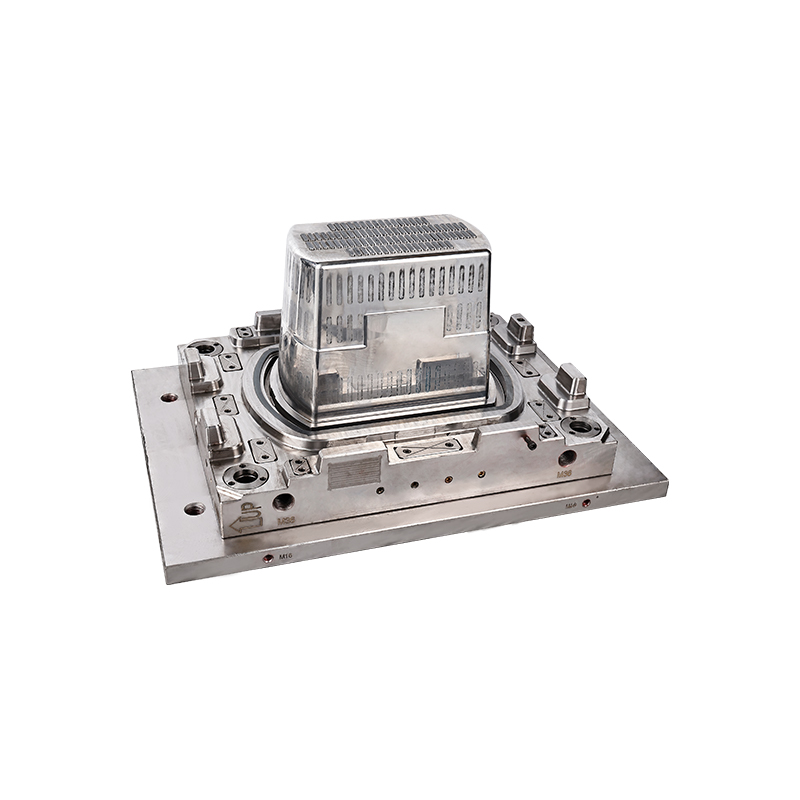
Overcoming Challenges in the Production of Hardware Tool Combined Storage Box Molds
The production of hardware tool combined storage box molds is a complex and meticulous process that demands precision and attention to detail. These molds serve a crucial role in shaping the housing for storage solutions that organize and protect various tools. However, like any manufacturing endeavor, the production of these molds is not without its challenges.
The design of hardware tool combined storage box molds is inherently complex due to the need to accommodate various tool shapes and sizes within a single, cohesive structure. Design challenges can arise in balancing the functionality of the storage box with the manufacturability of the mold. Achieving intricate internal compartments, sliding trays, or specialized holders while ensuring ease of mold release and efficient production is a delicate balance. Design engineers must carefully consider the geometry of the storage box and the corresponding mold to avoid complications during manufacturing.
Material Selection: Striking a Balance Between Durability and Cost
The choice of materials for the mold is critical, influencing both the longevity of the mold and the cost of production. Common materials for mold construction include various grades of steel and aluminum alloys.
Steel Alloys:
Advantages: Steel molds, such as those made from P20 or H13, offer excellent durability and wear resistance, making them suitable for high-volume production.
Considerations: The initial cost of steel molds may be higher, but their extended lifespan often justifies the investment in scenarios with demanding production requirements.
Aluminum Alloys:
Advantages: Aluminum molds are lighter, facilitating easier handling and installation. They also offer rapid heat dissipation, contributing to shorter cycle times.
Considerations: While aluminum molds may be cost-effective for certain applications, they may not be as durable as steel molds, especially in high-volume production scenarios.
Undercuts and Complex Features: Ensuring Proper Mold Release
Hardware tool combined storage boxes often have intricate features such as handles, hinges, and sliding mechanisms. These features can result in undercuts, areas where the mold cannot be easily withdrawn from the molded part. Proper draft angles and the use of advanced mold technologies, such as collapsible cores or side actions, are employed to ensure smooth mold release without compromising the integrity of the storage box.
Surface Finish: Meeting Aesthetic and Functional Demands
Achieving the desired surface finish on the molded storage box is crucial for both aesthetics and functionality. Surface imperfections can compromise the visual appeal, and rough surfaces may hinder the smooth operation of sliding trays or moving parts. Meticulous polishing of mold surfaces and the use of advanced coatings contribute to achieving a high-quality surface finish on the molded parts.
Injection Molding Challenges: Managing Filling and Cooling
The injection molding process introduces its set of challenges during the production of hardware tools combined storage box molds.
Incomplete Filling:
Challenges: Achieving complete filling of the mold cavities, especially in complex geometries, can be challenging. Incomplete filling may result in thin walls or voids in the molded parts.
Strategies: Adjustments in injection parameters, mold design modifications, and the use of advanced molding techniques, such as gas-assisted injection molding, can help ensure complete filling.
Cooling Challenges:
Challenges: Proper cooling is crucial for achieving uniform wall thickness and preventing issues such as warping or shrinkage. The complexity of the storage box design can pose challenges in regulating cooling rates.
Strategies: Incorporating cooling channels within the mold, optimizing cooling system design, and employing conformal cooling technologies contribute to efficient heat dissipation and consistent part quality.
Mold Maintenance: Extending Longevity and Performance
Over time, molds can experience wear and tear due to the repetitive nature of the injection molding process. Regular maintenance practices, including cleaning, inspection, and potential repairs or replacements, are essential for ensuring the longevity and continued performance of hardware tool combined storage box molds. Neglecting maintenance can lead to defects in the molded parts and increased downtime for mold adjustments.
Quality Control: Ensuring Consistency in Production
Maintaining consistency in the production of hardware tool combined storage box molds is crucial for delivering high-quality products. Comprehensive quality control measures, including inspections, dimensional checks, and material testing, are implemented throughout the manufacturing process to identify and rectify any deviations from design specifications. Consistent monitoring and adjustments contribute to the reliable production of molds that meet stringent quality standards.

 English
English  русский
русский Español
Español






